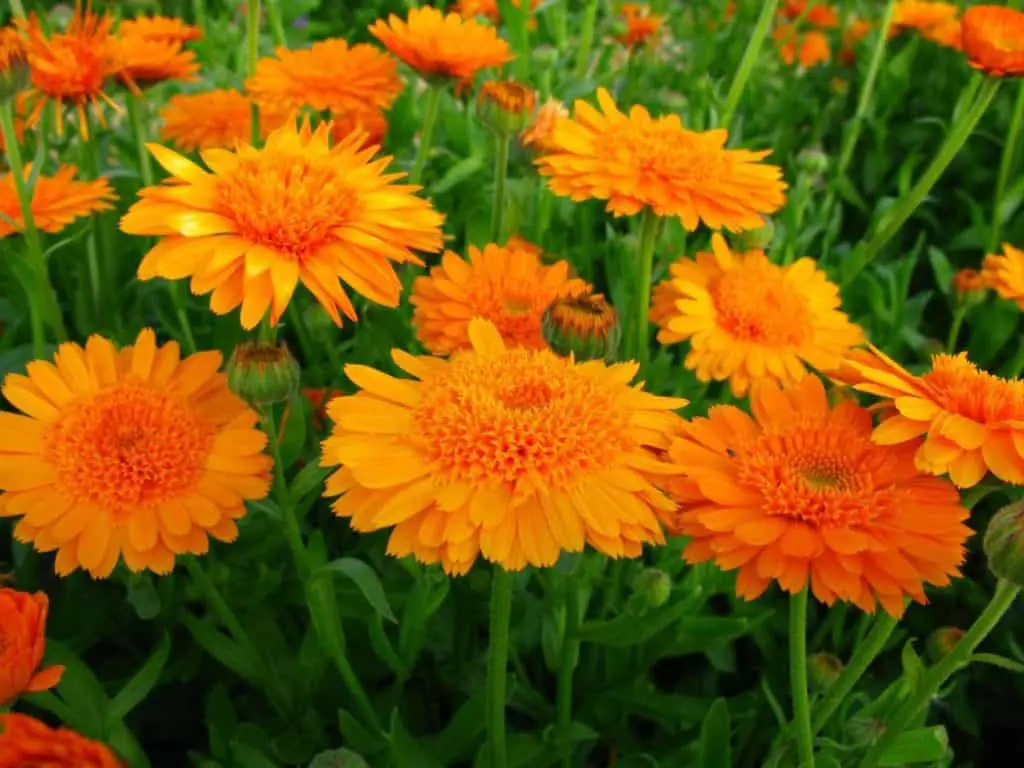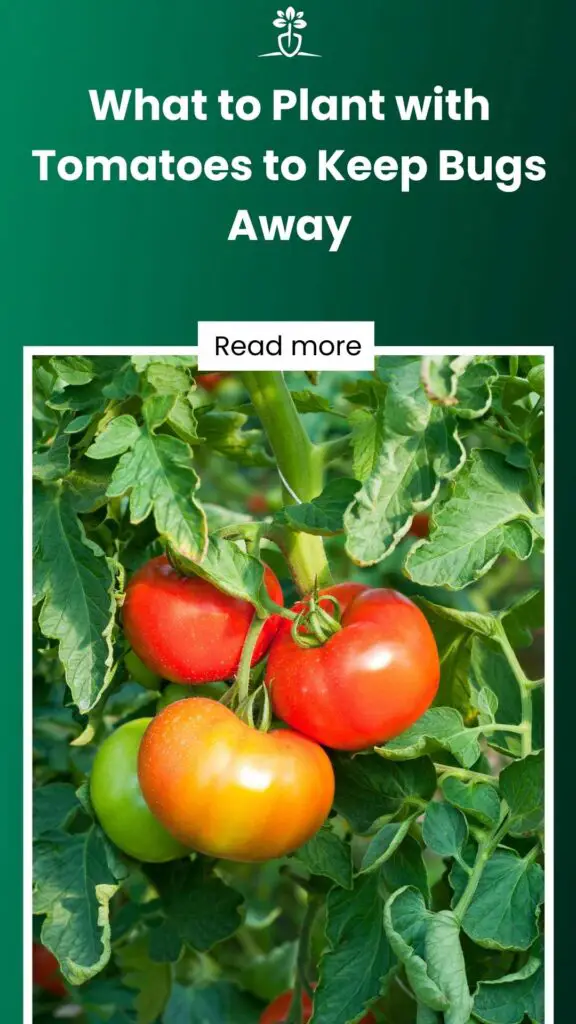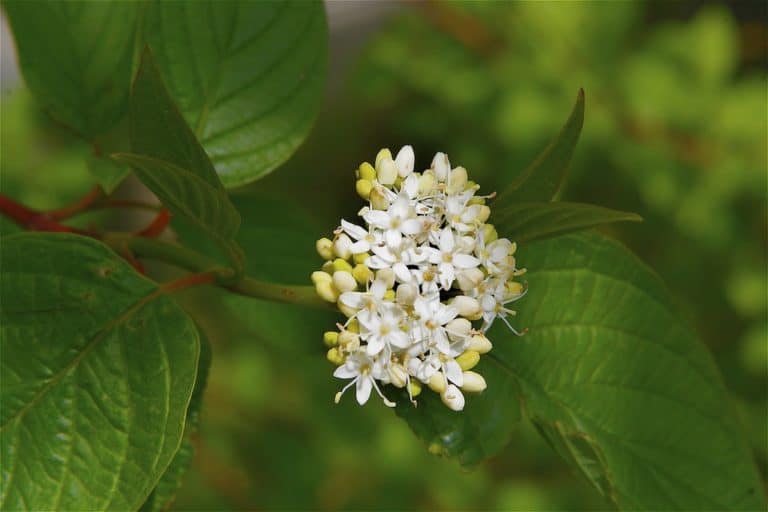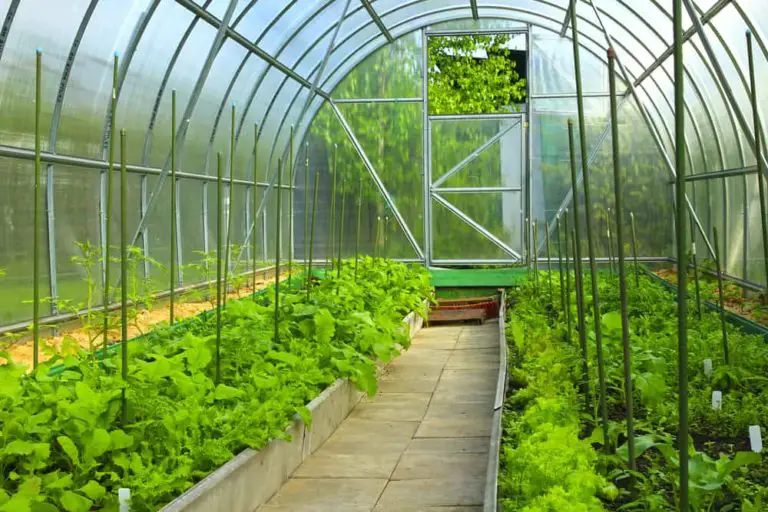What to Plant with Tomatoes to Keep Bugs Away
Tomatoes aren’t just tasty; they love some plant friends too! Discover those top plants that grow well with tomatoes, helping keep pesky bugs and problems far away. Who wouldn’t want a healthier garden with less hassle? Let’s dive into this green adventure!
We will cover each plant in detail and highlight what makes them good for either bug or disease prevention.
There are also some considerations as to what plants you shouldn’t plant with tomatoes.

Contents
Basil
Basil is a highly effective companion plant for tomatoes. They help repel mosquitoes, fruit flies, and many other kinds of flies. Basil also attracts bees which help with pollination but don’t attack tomatoes.
Basil also works being close in proximity to tomatoes, as they have complementary root systems. Tomatoes are known as having deep roots, while basil can survive in as little as eight inches.
Borage
Also known as starflower, borage is another great companion plant to tomato plants. It is very effective at keeping pests away and is particularly disliked by tomato hornworms.
Like basil, borage helps attract bees.
Borage can grow to a height of an average of between 18-36 inches which can provide good cover from the sun for your tomato plants.
Chives
Chives help repel many insects, including aphids. Aphids are common pests that can destroy tomato crops.
Chives are relatively easy to grow and, if they get full sun, they will last for years.
Chives work well around the edges of your tomato plants to act as a barrier. They have a strong smell and so repel pests and act as a decoy for pests to feed on.
Dill

Dill is another option as a companion plant. Immature dill has the power to repel aphids and hornworms. However, as the dill continues to grow, it may start to have negative effects on the growth of the tomato plant.
You may want to plant both borage and dill with tomato plants, so they are safe from hornworms.
Garlic
Garlic is another popular companion for tomato plants. It is particularly good against blights and red spider mites. However, the smell of garlic is the main deterrent amongst the insect world which means that other insects such as aphids and other beetles are not too keen either.
Garlic also has certain benefits as its protective power can also drive pests out of the soil. In addition, garlic bulbs placed into the soil can also contribute to the improved flavor of tomatoes.
Geraniums
Geraniums are a great all-purpose pest repellent. They have been found to repel worms, beetles, spider mites, and leafhoppers.
Leafhoppers are small insects usually green in color that blend into a plant’s green leaves.
Marigold

This one’s not a plant but a herb that helps reduce pests thanks to its strong scent. The usual common pests are repelled, including aphids, hornworms, thrips, and whiteflies.
Thrips can be vectors for various plant diseases, and so a few marigolds can do wonders.
Marigolds can also provide some protective properties which can stop certain root diseases like root knot occurring.
Mint
This aromatic plant repels aphids and white cabbage moths, ants, rodents, flea beetles, and other leaf beetles.
Mint is known as a particularly fast-growing and invasive species and so should be carefully monitored to ensure it doesn’t take over the garden completely.
Nasturtium
Also known as Indian cress or monks cress, this plant is one of the clearest examples of companion planting. It would offer tons of benefits to tomatoes and many others.
Airborne chemicals from this plant repel pests, and so they should be planted around the garden’s edges.
The plant does not discourage helpful insect pollinators like bumblebees.
Oregano
A popular herb for cooking and being a great companion to tomatoes, oregano will often attract many pollinators.
Parsley
Parsley doesn’t work well with all varieties of tomatoes but can attract hoverflies. Hoverflies are not harmful to your garden in general but will prey on aphids which can cause massive issues with tomato plants.
Another role that companion plants can play is to lure certain pests away from your tomato plants. For example, parsley can trap crops to attract aphids to attack them instead of the tomato plants.
Thyme
Thyme has a notable effect when planted near tomatoes. Like other herbs that are companion plants for tomato plants, thyme can help improve the taste of tomatoes while keeping bugs out.
Some companion plants attract helpful insects or birds that can help pollinate your garden. These, in turn, can prey on the pests that are destructive to tomatoes, reducing their population and thus their impact.
For a healthy garden, lots of flowers and herbs are the key. When you have a lush garden with many complementary species, it can attract pollinators, birds, and beneficial insects that will help your tomato plants grow to their full potential.
Avoid or Remove these Bad Companion Plants
Cabbage, corn, plants in the nightshade family like peppers, potatoes, and eggplant are all detrimental to the good growth of your tomato plants.
This is mainly due to the possibility of various forms of blights from these plants contaminating your tomato plants.
Cabbage and other plants in the family, such as kale, broccoli, and others, will negatively impact the growth of tomato plants and so should be avoided.
Corn shares some similar pests with tomato and so can invite disaster to your garden.
Fennel and walnuts both secrete substances that are not good for your garden in general.
Specifically, walnut trees produce chemicals that have toxic effects on tomatoes.




